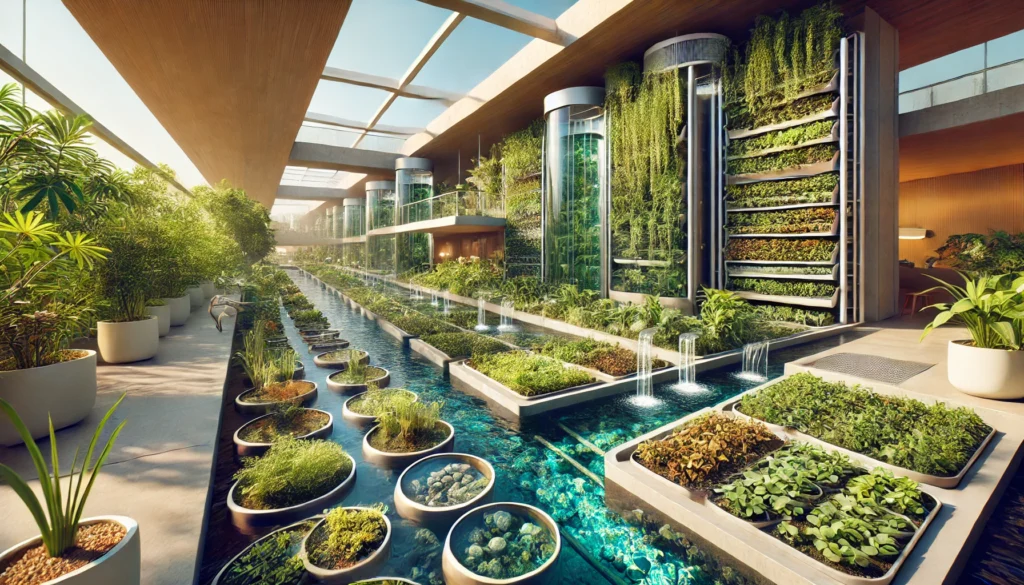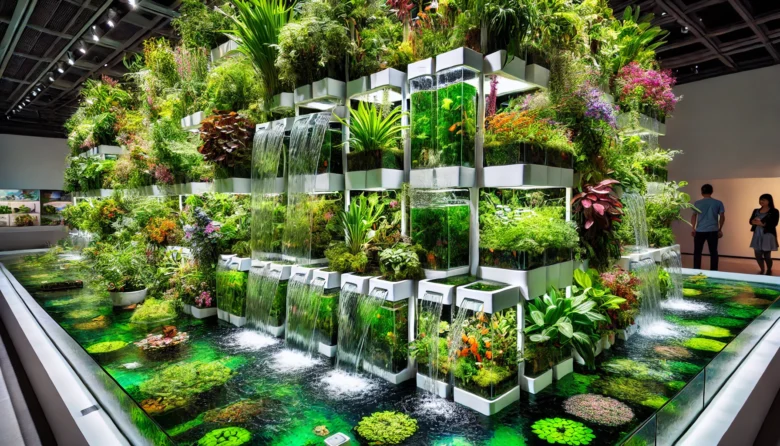Welcome to an exciting journey into the world of living machines, where plants and bacteria work together to treat wastewater. Imagine a system that mimics natural processes to clean water right in your backyard! This innovative approach is not only eco-friendly but also highly relevant to India, where managing wastewater is crucial for a sustainable future.
What Are Living Machines?
Living machines are systems that use a combination of plants, bacteria, and other natural elements to treat and purify wastewater. These systems replicate the natural purification processes found in wetlands, transforming polluted water into clean, usable water.
How Do Living Machines Work?
Living machines operate through a series of tanks and channels filled with plants, bacteria, and sometimes even small animals. Wastewater flows through these tanks, where various organisms break down pollutants and absorb harmful substances. The process involves several stages:
Primary Treatment: In the first tank, larger particles and solids settle at the bottom.
Secondary Treatment: Water flows into another tank filled with bacteria that consume organic matter.
Tertiary Treatment: The final stage involves plants and sometimes additional microorganisms that absorb remaining contaminants, leaving clean water.
Why Are Living Machines Important for India?
In India, where water scarcity and pollution are pressing issues, living machines offer a sustainable solution. These systems can be implemented in urban and rural areas, helping to recycle water, reduce pollution, and conserve precious resources.

Benefits of Using Living Machines
Eco-Friendly and Sustainable
Living machines are designed to work with nature, making them environmentally friendly. They use less energy compared to conventional treatment plants and produce minimal waste.
Cost-Effective
Once established, living machines require low maintenance and operational costs. They are an excellent investment for communities and industries looking to manage wastewater efficiently.
Versatile Applications
From small-scale household systems to large industrial setups, living machines can be tailored to fit various needs. They are ideal for residential communities, schools, hospitals, and factories.
Real-Life Examples in India
Auroville, Tamil Nadu
Auroville, an experimental township in Tamil Nadu, has successfully implemented living machines to treat its wastewater. These systems not only purify water but also enhance the local ecosystem by supporting diverse plant and animal life.
IIT Madras (Indian Institute of Technology, Madras)
IIT Madras has developed a living machine to treat sewage water on its campus. This groundbreaking initiative acts as an inspiration for other schools and communities to implement comparable eco-friendly practices.
The Science Behind Living Machines
Plants as Purifiers
Plants like water hyacinths, reeds, and cattails play a crucial role in living machines. Their roots provide a habitat for bacteria and other microorganisms that break down pollutants. These plants also absorb heavy metals and other harmful substances from the water.
Bacteria as Bioengineers
Bacteria are the workhorses of living machines. They break down organic matter and convert harmful substances into harmless byproducts. By creating a balanced ecosystem, bacteria help maintain the efficiency and effectiveness of the treatment process.
How to Set Up a Living Machine
Planning and Design
The first step is to assess the amount and type of wastewater you need to treat. A professional can help design a system that meets your specific requirements.
Selecting Plants and Organisms
Choosing the right plants and microorganisms is crucial for the success of a living machine. Native species are often the best choice, as they are well-adapted to local conditions.
Construction and Maintenance
Building a living machine involves setting up tanks, planting vegetation, and introducing microorganisms. Consistent upkeep is necessary to keep the system functioning optimally.
Challenges and Solutions
Initial Costs
The initial setup cost of a living machine can be high, but the long-term benefits and savings make it worthwhile. Grants and subsidies from the government or environmental organizations can help offset these costs.
Space Requirements
Living machines require space for tanks and vegetation. For urban areas with limited space, vertical gardens or rooftop installations can be effective solutions.
Conclusion
Living machines offer a promising solution to the wastewater treatment challenges in India. By harnessing the power of plants and bacteria, these systems provide an eco-friendly, cost-effective, and sustainable way to manage wastewater. Whether you belong to a residential community, an academic institution, or an industrial organization, living machines can aid you in supporting a cleaner, more sustainable environment.
Author’s Note:
Thank you for exploring the fascinating world of living machines with me. I hope this blog inspires you to think about innovative and sustainable ways to manage wastewater. Let’s work together to make our environment cleaner and healthier!
G.C., Ecosociosphere contributor.




